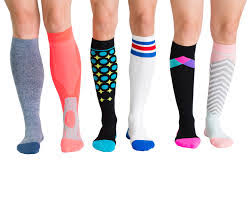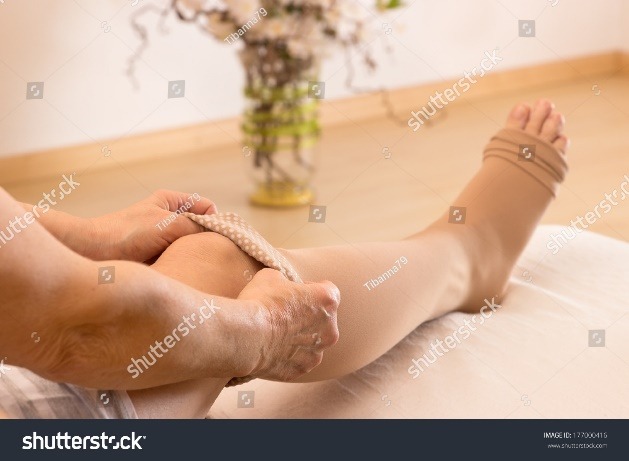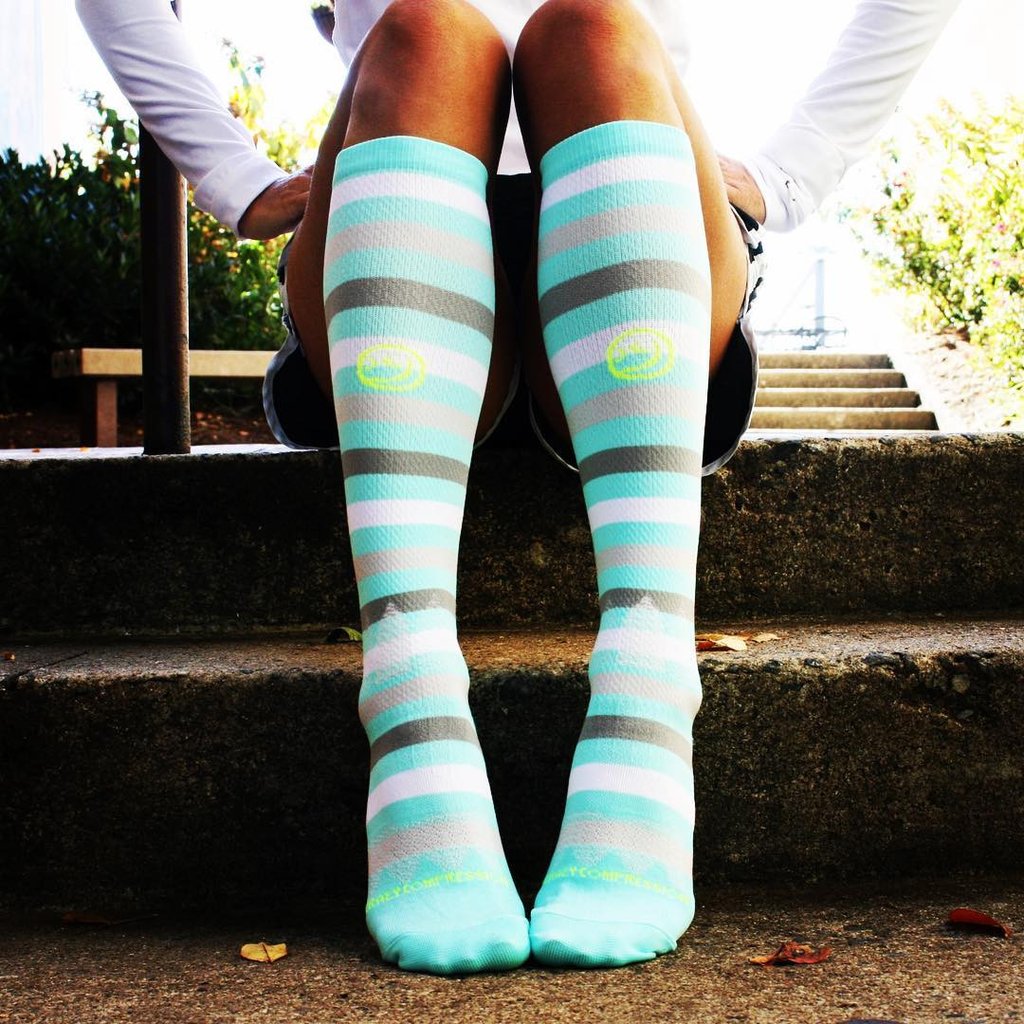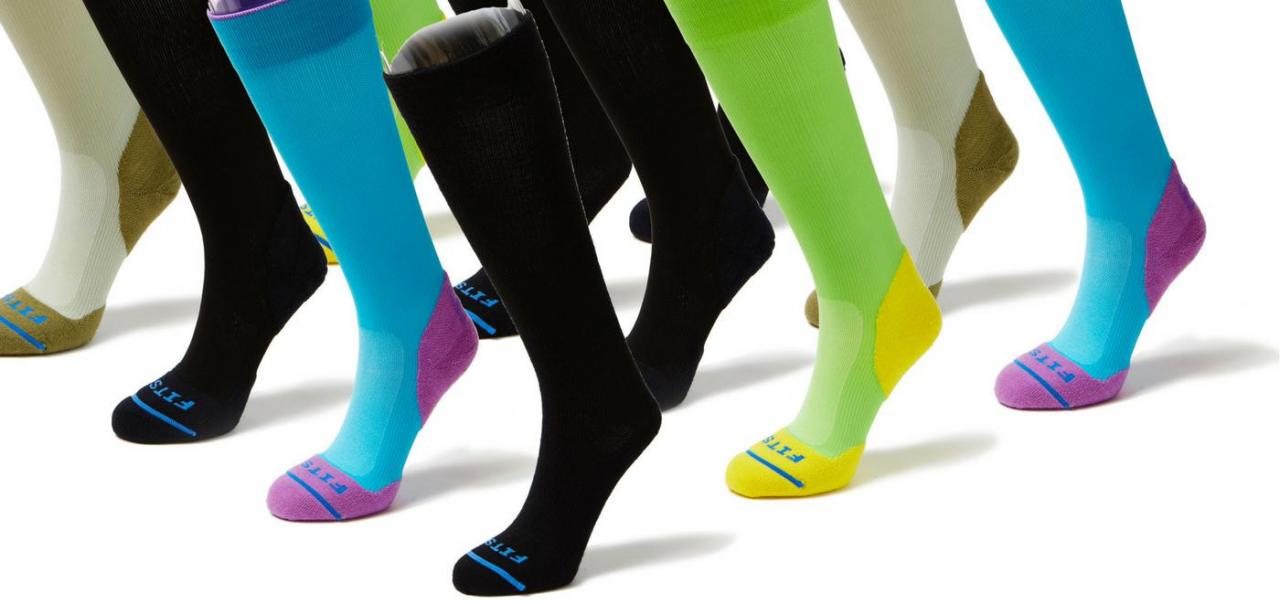Most nurses work 12-hour shifts or longer, that keeps you on your feet most of the time. Working for long shifts can not only make you feel exhausted, but it can also hurt your health. When you spend most of your shift hours on your feet, either walking or standing, and you don’t get time to rest them until your shift is over, it becomes essential to find a way to take care of your feet on and off work.
Why is it important to take care of your legs and feet? Getting the right supportive and properly fitting shoes and accessories can prevent your feet from developing bunions, calluses, and painful sores. The most important reason why you need to take care of your feet is to avoid serious problems like chronic back pains and blood clots. So, when you make your legs and feet a priority, you, in turn, help to keep the rest of your body healthy and supported. Wearing compression socks is one way of ensuring that your feet and legs are cared for, but there are also many other ways of boosting your foot care regimen.
What are compression socks or stockings?

Compression socks are specially designed socks that are supportive and snug-fitting, and you can pull them up till your calf. These elastic stockings are worn around your legs to encourage healthy blood circulation from your ankles to your heart. By increasing blood flow through your legs and feet, it helps to reduce the pressure on your veins and the aches and pains. Knee-high compression socks apply constant pressure on your calf ad ankle area, which helps to increase circulation in your legs and prevent the formation of blood clots at the lower part of your legs.
Unlike your regular or athletic socks, compression socks are made with a more durable elastic that applies significant pressure on your legs, ankles, and feet. They’re tightest at your ankles; then, they become less constricted as you go up towards your knees and thighs. When your veins on the surface, muscles, and arteries are compressed, they force the blood to go through narrow channels, which increases the arterial pressure, and this causes the blood to return to the heart so that there is less blood in your feet.
You can buy compression socks over the counter or have them prescribed by a doctor to prevent venous issues and symptoms of chronic venous disease. Compression socks are best suited for people with various problems like:
- Deep vein thrombosis
- Edema
- Lipodermatosclerosis
- Lymphedema
- Varicose veins
- Problems are moving your legs.
- Diabetic
- Athletes
- Pregnant women
- People who stand all day at work like nurses
- People who have a hard time leaving their beds or moving their legs
The primary function of compression socks is to improve blood flow in your legs, and if you travel a lot, you can wear these socks during your long flights to prevent your feet from swelling or reduce your risk of deep vein thrombosis. It’s also a good idea for pregnant women to wear compression socks because there are a lot of hormones being released in the body and the expansion of the uterus. This all puts more pressure on the major vein that takes back blood to the heart, which can affect the veins in the legs. Compression socks help to prevent blood from building up in the veins and lower the heart rate in both mother and child.
How do compression socks work?
The pressure applied on your legs by the compression socks helps the blood vessels work better, and this helps the blood to flow freely and relaxes the arteries that supply oxygen-rich blood to your muscles. They help to reduce the diameter of the major veins by increasing the volume and speed of blood flow. Compression stockings can help to keep your feet from feeling achy and tired and can also help to reduce swelling in your ankles and feet as well as help in treating varicose veins. Hen blood is constantly flowing through your body; it becomes difficult for it to concentrate on your veins and form clots. Clots are very dangerous because one can travel and get stuck in your lungs. They also obstruct the steady flow of blood, which can cause swelling, skin discoloration, and other serious problems.
Some athletes wear compression socks and sleeves on their legs and arms in the belief that it will help to improve blood flow and better supply of oxygen to their muscles during training, and also aid in faster recovery of the muscles. This way, their muscles won’t be too sore, and they will have fewer cramps.
Different types of compression socks and other compression garments for your legs

There are three main types of compression socks that you can wear to help improve blood circulation in your feet and legs.
Graduated compression socks
In this type of compression socks, the compression is tightest at your ankles; then it starts to decrease as you move to the top gradually. They’re designed with a certain length and strength according to medical specifications and also to help with mobility, so they require professional fitting. Compression socks that end up just below your knees help to reduce swelling on your lower leg caused by fluid buildup. The ones that extend to your thighs and waist help reduce the accumulation of blood in your legs and help to prevent orthostatic hypotension. You can get these socks in different colors, and you have a choice between getting the open or closed-toe.
Non-medical support hosiery
This kind of stockings doesn’t require a prescription. These include flight socks and elastic support hose that help to provide relief to your aching legs and tired feet. These exert less pressure on your legs than the prescribed compression stockings, and you can get them online or at the pharmacy.
Anti-embolism stockings
These stockings are similar to graduated socks in that they provide gradient compression; the only difference is the levels of compression vary. These stockings are specially designed for people who have difficulty moving their legs. They help to reduce your chances of developing deep vein thrombosis.
Apart from compression socks, there are other available options that you can use if you want to improve blood flow to your legs and avoid blood clots. Some of these options are better suited for your specific needs, personal preference, and dress code. These include:
Compression sleeves
Compression sleeves cover most of your calf and reach just above your ankle, but leaves your feet exposed. This will come in handy if you have a particular pair of socks that you want to wear during your shift but still want the benefits that come with compression sleeves. However, the compression sleeves don’t cover your thighs.
Compression socks
Unlike compression sleeves, the socks cover your feet, which helps to improve the circulation of blood in your legs and also offer protection to the sole and upper part of your legs. These are the most basic compression garments that you can wear for your legs and feet. Compression socks come in different styles and cute colors, depending on your preference.
Compression hose
You can wear a compression hose if you have a dressing code you have to adhere to, or you need to dress a bit more formally for a function. You will get them in all the basic colors, and they can work with a wide range of dress codes and uniforms. The best part is that compression tights cover to your thighs, which is very helpful in preventing the formation of varicose veins in that area.

Reasons why every nurse should wear compression socks
Nurses and other health professionals who spend most of their time on your feet must take some time after your shift to take care of your legs and feet. Apart from wearing the right shoes, you should also consider wearing compressions socks. Here are some of the reasons why you should own a pair of compression socks.
Prevents your legs and feet from swelling
After being on your feet for more than 12 hours, your legs and feet will most likely be swollen. This is caused by a buildup of fluid in your muscle tissue or swelling, which can be very painful and may affect your ability to perform your duties properly. This is why you need compression socks to help prevent your legs from swelling by forcing the blood to flow upwards. The graduated compression from the compression socks is tightest around your lower legs and feet because these are the areas that mostly swell. As a nurse, you have a tough job that demands a lot from you, and compression socks will help to keep your feet more comfortable no matter what happens during your shift.
Reduce leg fatigue
Nursing is a very challenging job that requires you to have a lot of strength and stamina that will leave your body and mind exhausted at the end of the day. Compression socks help in improving the circulation of blood and oxygen to your body and muscles, which helps to prevent the buildup of lactic acid in your muscles.
Reduce spider and varicose veins
Standing for an extended amount of time can cause varicose veins, which happen when there is a blood pool and enlarging of veins in the lower part of your legs. Varicose veins can be very painful and sometimes itchy because the veins put pressure on your legs, but wearing compression socks can help remedy this condition and relieve the symptoms so you can be free to show off your beautiful legs during your days off.
Reduce leg and foot pain
Your legs will most likely start to hurt after you’ve been standing throughout your shift because you will rarely get the opportunity to sit down and rest for even a few minutes. The minute you decide to sit and rest, an emergency may come through the door at any minute, and you’re back on your feet. By wearing compression socks, you will notice that you’ll experience less pain in your legs and feet. They help to improve blood circulation in your legs, which makes it easier for your circulation system to deliver oxygen and nutrients to your muscles. Boosting blood flow also helps to reduce lactic acid buildup in your muscles, which results in keeping your legs and feet healthy with no aches and pains even when working for long hours.
Helps in muscle recovery
One of the huge benefits of wearing compression socks is that they don’t only help you during your shift; they also help you even after you’ve gone home. Even after your 12-hour shift is over, your feet still need to be taken care of. Continuing to wear your compression socks even when you’re at home relaxing will help boost your muscle recovery, boost circulation, reduce swelling, and relieve soreness in your feet and legs.
Prevent blood clotting
Nobody wants to have blood clots in their veins because they can be very dangerous. Knee-high compression socks are loved by both athletes and nurses alike because they help in reducing swelling in your legs. They’re also very good at helping to alleviate symptoms caused by varicose veins, skin ulcers, and deep vein thrombosis.

Your socks’ choice doesn’t interfere with your dress code.
Compression socks are fun and stylish and come in a variety of funky colors and patterns. Even if you work in a hospital with the strictest dress code will most likely not have a problem with you coming to work in colorful socks or socks with fun patterns. By wearing socks that make you feel good, it will help increase your mood and confidence. Your solid color scrubs don’t have to be boring; you can rock some amazing, stylish, and expressive socks.
How to choose the right compression socks for you
There are a variety of compression socks that come in different sizes, styles, length, material, and compression levels. Here are a few tips to help you choose the right compression socks.
Size of socks or stockings
When it comes to the size, most retailers provide you with a measuring chart that will help you determine the size you want. The sizes will vary depending on the compression socks that will suit your needs.
Knee-high compression socks:
These socks go up to below your knees just above the curvature of your calf. Although some stockings and socks can stretch even over your knees, don’t pull hem above your knee because this might cause them to slide or roll down. This can be very uncomfortable, and at times dangerous depending on the compression you’re wearing or your condition.
Waist-high socks or pantyhose: These compression stockings are attached at the torso of both legs. They help to reduce the swelling up and out of your legs through your hips. For women, this pantyhose are highly elastic around the belly to accommodate different shapes. Your size is mostly based on the ratio between your height and weight. You might also need to measure the circumference of your calf, ankle, and thighs.
Thigh-high socks:
These cover your entire leg and stop just above your leg and below your buttocks. They’re designed to cover your entire thigh because they’re meant to improve circulation to your entire leg.
Style and material:
The material and style you choose will depend on why you need the compression socks. You will get compression socks made from rubber, spandex, or lycra and in different lengths. However, if you have a medical condition, it’s best to seek the doctor’s advice. Socks made from opaque fabrics are more durable and ideal for wearing after surgery, swelling, and varicose veins. Sheer material is light, fashionable, and transparent, but are less durable and don’t provide enough compression against swelling. Compression socks for sports are made from cotton or wool and are very durable and help to control heat and moisture. They’re a great choice to wear daily after surgery, swelling, and spider veins.
Compression
There are different levels of compression.
- Light to moderate compression is 15-20 mm Hg ideal if you’re traveling, pregnant, son your feet all day, or have a little less leg swelling.
- Moderate compression is 20-30 mm Hg if you have tired and exhausted legs, have varicose veins, and moderate swelling from pregnancy.
- Firm compression is 30-40 mm Hg for moderate to severe varicose veins or moderate edema.
- Extra firm compression is 40-50 mm Hg for chronic venous disease or varicose veins.
- Heavy compression is 50-60 mm Hg is the strongest compression for severe thrombotic syndrome and lymphedema.
FAQ
How many hours a day should you wear compression socks?
You should wear them during the day and take them off at night before going to bed. Then put them on again in the morning.
Is it dangerous to wear compression socks?
If you suffer from a severe vascular disease, you shouldn’t wear compression socks, but otherwise, it’s not dangerous.
Can you leave compression socks on overnight?
If you don’t have a medical condition and are perfectly healthy, it’s not advisable to wear compression socks while you’re sleeping.
Can compression socks be too tight?
If your socks are uncomfortable, you have red marks from the elastic, or your legs are throbbing, the socks are too tight and not your right size.
Is there an alternative to compression stockings?
Compression leggings are from your legs to your thighs and a great alternative to prescribed compression stockings.
Final thoughts
Taking care of your legs and feet after a long shift is an excellent way of ensuring you stay healthy and wearing compression socks will improve circulation in your legs and feet and make you comfortable throughout the day.
 Nursing Trends
Nursing Trends
